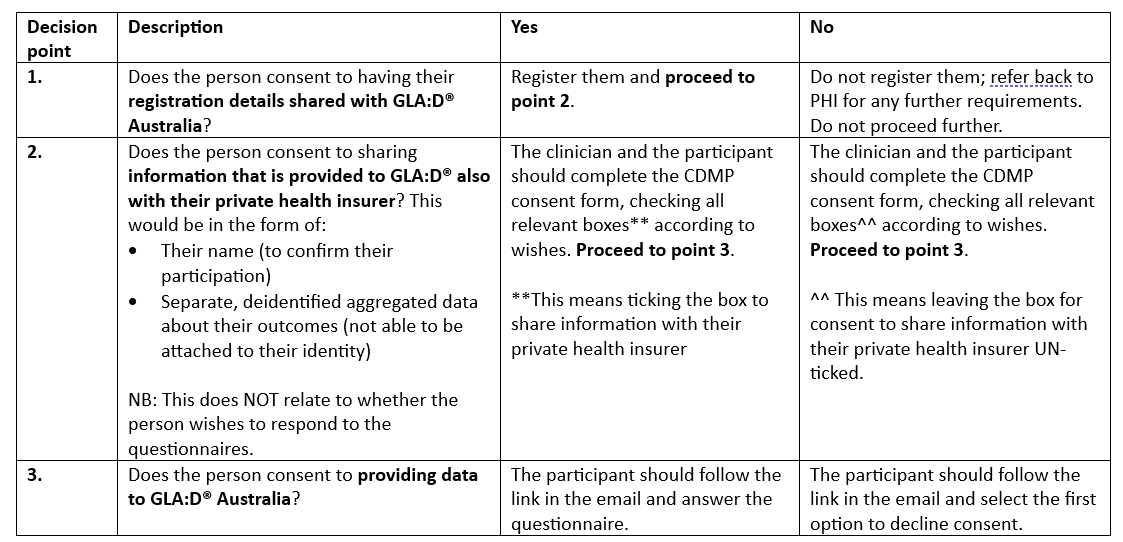As private health insurers look to provide better funding to support GLA:D® Australia for their members, initiatives to provide the program as a chronic disease management program (CDMP) are emerging.
Please check directly with the insurer to determine participant eligibility and any agreements required for the clinic to provide GLA:D® as a CDMP.
Currently, HBF and HCF have a specific agreement in place with La Trobe University relating to data collection to assist in evaluating their CDMP.
In order to constitute delivery of GLA:D® as a CDMP, you must:
- Register participants on the registry, found here.
- Indicate that the program is being provided as a CDMP when registering (see guidance video below).
- Obtain and upload the WRITTEN consent to participate in the CDMP project data sharing arrangements if required – currently only HBF and HCF.
- Complete a treatment plan (see guidance video, and link to download below).
Other private health insurers may be using the CDMP framework to fund GLA:D®, but they do not have a data sharing agreement in place with La Trobe University and so this specific consent does not apply. Please consult the insurer directly to confirm any other requirements relating to accessing this funding.
Download the treatment plan template here.
If you aren’t sure how to explain it to people, you can use this script:
- The CDMP Participant Information Sheet and Consent Form outlines the GLA:D® Program and all that’s involved with it. It’s the same as the Participant Information Sheet for the main GLA:D® Program but has some extra points about what else will happen to CDMP participants’ data. These additional points need signed consent by the participant and a declaration by the clinician.
- The extra points are that GLA:D® Australia will confirm the participant’s name with their private health insurer; and that we will provide de-identified aggregated data, which is data that can’t identify participants in any way as part of reports to the private health insurer. The private health insurer will use the participant’s name to confirm claim payment, and will use the de-identified data to help inform decisions about continuing this type of funding.
- Providing consent by signing this form and checking the relevant box will give the participant’s name to GLA:D® Australia, and then to their health insurer. Once they receive their baseline questionnaire, participants can still decide whether or not to provide GLA:D® Australia with their data through the questionnaires.
- Participants can withdraw consent at any time after providing data to the program. The process for this is outlined on the Participant Information and Consent Form.
Alternatively, you can play this audio recording for participants, then answer any questions they may have:
- Withdrawal of consent does not apply at registration and should not be attached to the registration form.
- If a CDMP participant agrees to sharing of their name with GLAD® Australia but not with their PHI, they should complete the consent form and leave the appropriate box unchecked.
- If they agree to sharing their name with GLAD® Australia and with their PHI, they should complete the consent form. They can then decline to provide further data if they wish to do so by indicating in the questionnaire.
- If they do not wish their name to be shared with GLAD® Australia or their PHI they should not be registered.
- Submitting a withdrawal of consent form along with a registration creates an ambiguous situation where it is not clear what information can be shared with whom. If this is done, we will not be able to confirm their participation in the CDMP with their PHI.


